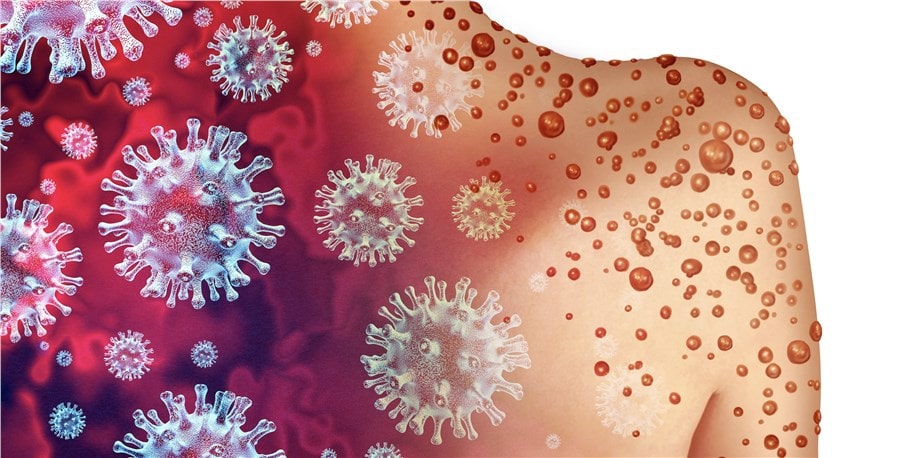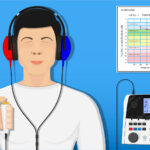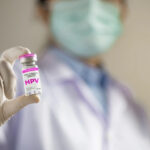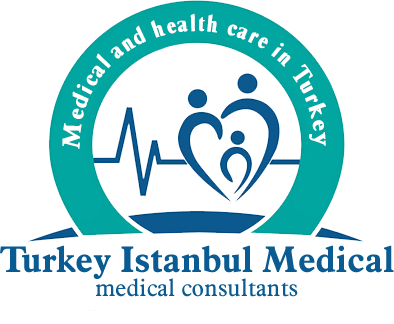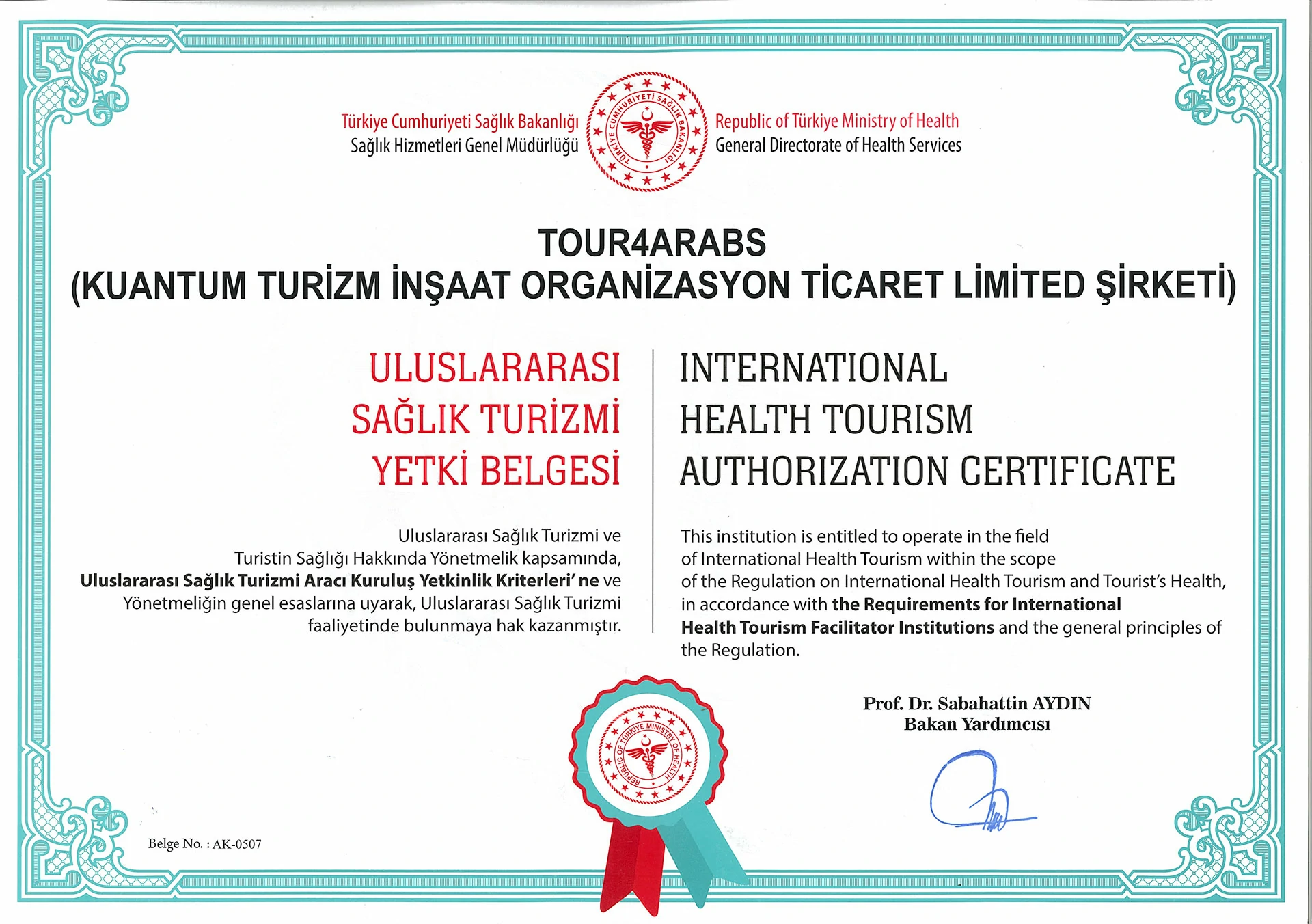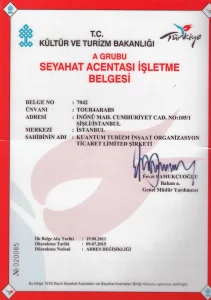What is Monkeypox Virus?
Monkeypox virus is the main infectious agent of a rare form of monkeypox disease, also known as monkeypox. It usually causes a rash.
And it has flu-like symptoms. The virus belongs to the Poxviridae family of the Orthopoxvirus genus. This is in the same category as the more common smallpox.
The disease was first discovered in 1958 and occurred in research monkeys. It is actually transmitted through contact with rodents that carry the virus, as well as through contact with infected humans.
There are two types of this virus. One is found in Central Africa and the other in West Africa.
Although this virus has been detected in Africa for many years, it has also been found in other parts of the world: the first major outbreak of monkeypox outside Africa was recorded in the United States in 2003. Carriers were transported from Ghana to Texas. The rodents spread the virus to pet dogs, which infected 47 people in the Midwestern United States.
Previously seen in only a few regions, the disease began to spread worldwide through travel. Monkeypox virus was detected in travelers from Nigeria to the United States in 2021. In 2021, a passenger from Nigeria to the United States was infected with the virus. In 2022, a passenger from the United States was infected with the virus.
What are The Symptoms of Monkeypox Virus?
Monkeypox virus, which is usually transmitted from infected animals to humans, begins with flu-like symptoms in humans.
Then the characteristic skin rash appears.
Early Symptoms
The first symptoms of monkeypox virus usually appear between 5 and 21 days after infection. This virus enters the body and enters the incubation period, and then the disease symptoms gradually appear. The first symptoms start with flu-like symptoms. These include general symptoms such as high fever, severe headache, muscle pain, weakness and fatigue.
At the same time, swelling in the lymph nodes becomes evident, especially in the neck, armpit and groin areas. This swelling is one of the characteristic symptoms of the disease and occurs as a defense reaction of the body against the virus.
Early symptoms of monkeypox virus include:
- Fever
- Headache
- Muscle aches
- Back pain
- Weakness
- Lymph node swelling (lymphadenopathy)
Later Symptoms
Monkeypox virus manifests itself with more obvious and serious symptoms in later stages. In this stage of the disease, skin rashes and blisters become more widespread. And they spread to different parts of the body. These blisters are usually fluid-filled and can fill with pus over time. And they can become more painful. In later stages, the rashes can merge. They can form large, painful lesions. This can damage large areas of skin. And it can take time to heal.
Later symptoms of monkeypox virus include more obvious symptoms.
Symptoms that concern the skin include:
- Skin rash
- Blisters (vesicles)
- Pustules (pus-filled blisters)
- Crusting
- Itching and pain
- Wound healing
How is Monkeypox Virus Transmitted?
Monkeypox virus is usually transmitted through direct contact with skin lesions, body fluids, or respiratory droplets from infected animals or people. The virus can be transmitted from both animals to humans and from humans to humans.
Routes of transmission include:
Animals to Humans
Contact with Infected Animals:
The virus is usually transmitted through direct contact with the blood, fluids, or tissues of infected animals (especially rodents and primates).
Hunting and Meat Processing:
The virus can also be transmitted during hunting, processing, or consumption of infected animals.
Humans to Humans
Body Fluids and Lesions:
It can be transmitted through direct contact with body fluids (blood, saliva, nasal discharge) or rashes of infected people.
Contact with Lesions:
Direct contact with rashes, blisters, and scabs of infected individuals can spread the virus.
Aerosols and Droplets:
The virus can also be spread through droplets that are released into the air when an infected person talks, coughs, or sneezes. However, this is generally a less common route of transmission than smallpox.
Surface Transmission
Surfaces and Objects:
The virus can also be spread through surfaces or objects that infected people touch. Items that have been touched by the rash can be a particular risk.
What is the Difference Between Monkeypox and Chickenpox?
There are some basic differences between the two diseases that have similar symptoms.
These are as follows:
- Mpox is an orthopox virus, while chickenpox is a herpes virus.
- Chickenpox is much more contagious. And it spreads much faster.
- Chickenpox usually heals within 2 weeks. Monkeypox heals in 2-4 weeks.
Diagnosis and Diagnosis of Monkeypox Virus
Diagnosis and diagnosis of monkeypox virus is made by clinical evaluation and laboratory tests. These methods are important for the accurate diagnosis of the disease and the application of appropriate treatment methods.
Clinical Evaluation
Clinical evaluation begins with examining the patient’s symptoms and physical findings.
Monkeypox infection usually begins with flu-like symptoms such as;
- High fever,
- Headache,
- Muscle pain,
- Back pain,
- Weakness and swollen lymph nodes.
These early symptoms can be confused with other viral infections.
Therefore, careful clinical evaluation is necessary.
The characteristic skin rashes of the disease are an important finding that supports the diagnosis.
The rash usually starts on the face. It is seen as blisters, pustules and crusts that spread to other parts of the body.
Observing these symptoms helps doctors diagnose the disease.
Laboratory Tests
The definitive diagnosis of monkeypox virus is made with laboratory tests. Although clinical symptoms provide strong clues about the presence of the disease, laboratory tests are necessary to confirm the diagnosis.
The most commonly used methods among laboratory tests are as follows:
PCR (Polymerase Chain Reaction) Test:
This test detects the genetic material (DNA) of the virus in samples taken from the patient’s blood, skin lesions or other body fluids. The PCR test is a preferred method due to its high sensitivity and specificity.
Electron Microscopy:
Examination of samples taken from infected tissues with an electron microscope allows direct observation of virus particles. This method can be helpful in identifying the virus.
Viral Culture:
It is possible to isolate the virus by multiplying samples taken from the patient in appropriate cell cultures. However, this method can take longer and requires high biosecurity measures.
Serological Tests:
Serological tests can be used to detect antibodies formed against the virus in the patient’s blood. These tests can be useful in the late stages of infection or during the recovery process.
Clinical evaluation and laboratory tests can be used together to diagnose monkeypox virus. Observation of clinical signs and evaluation of the patient’s history are the first steps in the diagnostic process. Laboratory tests are used to confirm these clinical findings and make a definitive diagnosis. This combination is critical for making an accurate and rapid diagnosis. Diagnosis and diagnosis of monkeypox virus is made with careful clinical evaluation and appropriate laboratory tests. These methods allow the disease to be detected at an early stage and appropriate treatment methods to be applied.
Treatment Methods for Monkeypox Virus
Treatment methods for monkeypox virus are applied to relieve the symptoms of the disease and prevent complications.
Generally;
- Supportive treatment,
- Antiviral drugs,
- and vaccines
and preventive measures.
Most people recover completely from the infection. However, patients with weak immune systems may experience severe virus.
Supportive Treatment
Although there is no specific treatment for monkeypox virus, supportive treatment is aimed at relieving the symptoms of the disease.
These treatment methods include:
- Fever and pain control,
- Adequate fluid therapy to prevent dehydration,
- Nutrition to keep the immune system strong,
- Care of skin rashes and ensuring hygiene rules
Antiviral Drugs
Antiviral drugs have an important place in the treatment of Monkeypox Virus (MPXV) infections. These drugs can help reduce the severity of the disease and speed up the recovery process by preventing the virus from multiplying.
Antiviral treatments are used especially in individuals with weak immune systems and in cases of severe infection. In addition, supportive treatment methods are also applied to alleviate patients’ symptoms and prevent complications.
Studies on the effectiveness and safety of antiviral drugs reveal the potential benefits of these treatment methods in combating the Monkeypox Virus.
Vaccination and Preventive Measures
Vaccination and preventive measures can be taken to prevent the spread of monkeypox virus and control the disease.
For example, smallpox vaccination also provides protection against monkeypox virus.
After exposure to monkeypox virus, smallpox vaccination can prevent the development of infection or reduce the severity of symptoms.
The most effective method is to administer the vaccine within the first few days after exposure.
Limiting contact with infected people, using personal protective equipment (gloves, masks, aprons), and disinfecting infected areas are among the preventive measures. In terms of health measures, informing the public and healthcare professionals about monkeypox and providing training is critical to preventing the spread of the disease.
Are There Ways to Protect Yourself from Monkeypox?
To help prevent getting monkeypox, take the following steps:
- Avoid close, skin-to-skin contact with people who have a rash that looks like monkeypox.
- Do not touch the rash or scabs of a person who has monkeypox.
- Do not kiss or hug someone who has monkeypox.
- Avoid contact with objects and surfaces that a person with monkeypox has used.
- Do not share eating utensils or drinking glasses with someone who has symptoms of monkeypox.
- Do not handle or touch the bedding, towels, or clothing of a person with monkeypox.
- Wash your hands often with soap and water, especially before eating and touching your face. Or use a hand sanitizer with a high alcohol content.
Questions About Monkeypox
Is Monkeypox Deadly?
Monkeypox virus disease usually causes a mild disease. However, in rare cases it can be fatal.
The mortality rate can vary depending on the variant of the virus and the severity of the disease.
The Congo Basin variant has a higher mortality rate than the West African variant.
What is the Spread Rate of Monkeypox Virus Disease?
Monkeypox virus disease is a virus with a low potential for spread from person to person. However, it can be transmitted through direct contact with infected animals or through respiratory droplets. The disease usually occurs in small, limited outbreaks.
How Long Does It Take to Heal from Monkeypox Virus?
The normal recovery time for monkeypox virus is about 2 to 4 weeks. When you are exposed to the virus, the rash dries up and falls off, which usually means the disease is gone.
